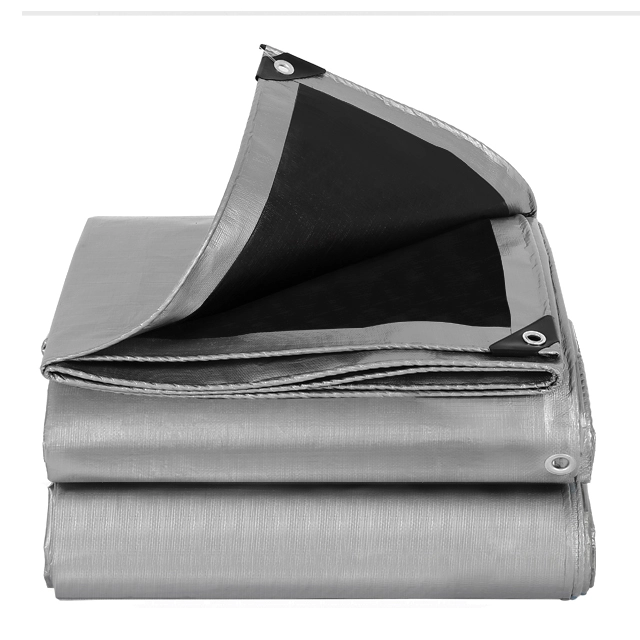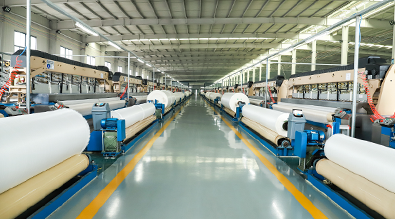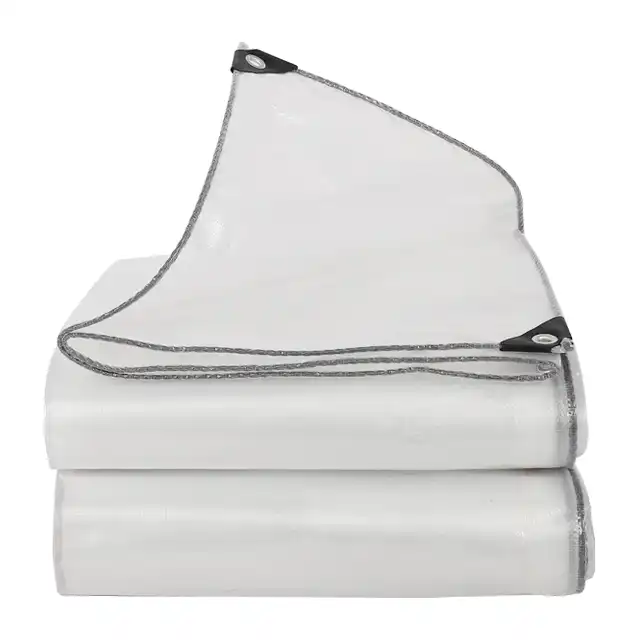The Importance of Tarpaulins in Warehouse Management
Imagine walking into your warehouse after a heavy rainstorm only to discover thousands of dollars worth of inventory damaged by water seeping through gaps, or finding your valuable machinery covered in dust and corrosion after months of inadequate protection. These scenarios are all too common for warehouse managers who underestimate the critical role that warehouse tarpaulin solutions play in protecting assets and maintaining operational efficiency. High-quality warehouse tarpaulin systems serve as the first line of defense against environmental threats, inventory damage, and costly operational disruptions that can significantly impact your bottom line.
Understanding Warehouse Tarpaulin Applications and Benefits

Effective warehouse management demands comprehensive protection strategies that address multiple environmental challenges simultaneously. Warehouse tarpaulin solutions have evolved from simple covering materials into sophisticated protective systems designed to meet the complex demands of modern logistics and storage operations. These protective covers serve multiple critical functions that extend far beyond basic weather protection, including moisture control, dust prevention, temperature regulation, and even security enhancement through visual barriers and controlled access points. The strategic implementation of warehouse tarpaulin systems directly impacts inventory quality, reduces product loss, minimizes insurance claims, and extends the operational lifespan of both stored goods and warehouse infrastructure. Modern PE tarpaulin technology incorporates high-density polyethylene fibers woven into robust fabrics and laminated on both sides to create waterproof barriers that withstand even the harshest industrial environments. The materials used in professional-grade warehouse tarpaulin products feature advanced UV protection treatments ranging from one to seven percent concentration, ensuring that prolonged sun exposure does not degrade the protective qualities or structural integrity of the covering material.
-
Critical Protection Functions of Warehouse Tarpaulin
Professional warehouse tarpaulin systems deliver comprehensive protection across multiple dimensions that are essential for maintaining product quality and operational continuity. The waterproofing capabilities prevent moisture infiltration that can cause rust, corrosion, mold growth, and material degradation in stored products. This is particularly crucial for warehouses storing metal components, electronic equipment, textiles, paper products, and food items that are highly sensitive to humidity changes. The tear-resistant properties of quality warehouse tarpaulin materials ensure that covers remain intact even when subjected to mechanical stress during handling, wind pressure, or accidental contact with equipment. Beyond basic protection, warehouse tarpaulin systems contribute significantly to inventory management efficiency by creating clearly defined storage zones and protecting goods during both short-term and long-term storage periods. The availability of various thickness options ranging from seven to twelve mil allows warehouse managers to select appropriate protection levels based on specific storage conditions, duration requirements, and environmental exposure factors. High-quality warehouse tarpaulin products manufactured with mesh counts between ten by ten and fourteen by fourteen provide optimal strength-to-weight ratios that facilitate easy handling while maintaining robust protective capabilities. Temperature control represents another critical advantage of properly implemented warehouse tarpaulin systems, particularly in facilities lacking climate control infrastructure. The insulating properties help moderate temperature fluctuations that can damage temperature-sensitive products, while UV-resistant coatings prevent heat buildup that could create uncomfortable working conditions or compromise product integrity. The arctic flexibility features incorporated into premium warehouse tarpaulin materials ensure that covers remain pliable and functional even in extremely cold environments where inferior materials might become brittle and crack under stress.
Warehouse Tarpaulin Material Specifications and Selection Criteria
Selecting appropriate warehouse tarpaulin materials requires careful evaluation of multiple technical specifications and operational requirements to ensure optimal performance and cost-effectiveness. The construction methodology significantly impacts durability and functionality, with high-quality products featuring HDPE woven fabric bases combined with LDPE coating layers that create impermeable barriers against moisture while maintaining material flexibility. The weight specifications, typically ranging from sixty-five GSM to two hundred eighty GSM for general applications, directly correlate with durability expectations and suitable use cases within warehouse environments. Professional warehouse tarpaulin selection should prioritize products with reinforced edges and rust-free eyelet systems that facilitate secure installation and long-term durability under tension. The availability of customizable dimensions, including roll widths up to five point one meters, enables comprehensive coverage of large warehouse areas or oversized equipment without creating weak points through seaming or joining multiple smaller sections. Color availability serves both functional and organizational purposes, allowing warehouse managers to implement color-coding systems that improve inventory identification and workflow efficiency while ensuring high visibility in safety-critical zones.
-
Technical Performance Characteristics
The performance characteristics of warehouse tarpaulin materials must align with specific operational challenges encountered in diverse warehouse environments. Anti-freezing properties ensure that covers maintain flexibility and protective functions throughout winter months when temperature extremes might compromise inferior materials. The anti-corrosion features protect not only the stored items but also the tarpaulin itself, extending service life and reducing replacement frequency in environments where chemical exposure or atmospheric contaminants might accelerate material degradation. Shrink-proof construction maintains dimensional stability even after prolonged exposure to varying temperature and humidity conditions, ensuring that covers continue to fit properly without developing gaps that could compromise protective functions. The combination of all these technical features creates warehouse tarpaulin solutions that deliver reliable, long-term protection while minimizing maintenance requirements and operational disruptions. Monthly production capacities of four thousand metric tons from established manufacturers demonstrate the scale at which quality warehouse tarpaulin products can be produced to meet growing global demand for effective warehouse protection solutions.
Implementation Strategies for Warehouse Tarpaulin Systems
Successful warehouse tarpaulin implementation requires systematic planning that addresses coverage requirements, installation methods, maintenance protocols, and integration with existing warehouse operations. The initial assessment should identify all areas requiring protection, including raw material storage zones, finished goods sections, equipment staging areas, and temporary work spaces that need environmental separation. Understanding the specific threats in each zone—whether water damage, dust contamination, UV exposure, or temperature fluctuations—enables precise specification of appropriate warehouse tarpaulin products and installation configurations. The installation methodology significantly impacts both initial effectiveness and long-term performance of warehouse tarpaulin systems. Proper anchoring systems must account for wind loads, material handling equipment clearances, and worker safety considerations while ensuring that covers remain securely positioned without creating operational obstacles. The use of high-strength fastening systems with weather-resistant hardware prevents cover displacement during severe weather events that could otherwise expose protected inventory to damage. Regular inspection protocols should verify cover integrity, identify developing wear patterns, and schedule timely replacements before protective failures occur.
-
Optimizing Warehouse Tarpaulin Performance
Maximizing the return on investment from warehouse tarpaulin systems requires attention to proper handling, storage, and maintenance practices that extend material service life. Training warehouse personnel on correct installation and removal procedures prevents unnecessary stress on materials that could accelerate wear or cause premature failure. When not in active use, warehouse tarpaulin materials should be stored in clean, dry locations away from sharp objects or chemical contaminants that might compromise material integrity. Periodic cleaning removes accumulated dust, debris, and chemical residues that could degrade protective coatings or create unsightly appearances that impact professional presentation standards. The integration of warehouse tarpaulin systems with broader facility management strategies creates synergistic benefits that enhance overall operational efficiency. Coordinating cover placement with material handling workflows prevents interference while ensuring that protection remains in place during all vulnerable periods. The flexibility to rapidly deploy and reposition warehouse tarpaulin covers supports dynamic operations where storage configurations change frequently to accommodate varying inventory levels or seasonal demand patterns. This adaptability represents a significant advantage over permanent structural solutions that lack the flexibility to evolve with changing business requirements.
Warehouse Tarpaulin Cost-Benefit Analysis
Understanding the economic value of professional warehouse tarpaulin systems requires comprehensive evaluation of both direct and indirect benefits that extend beyond simple purchase price comparisons. The prevention of inventory damage delivers immediate and substantial returns by eliminating product losses that would otherwise require replacement at full cost plus the administrative burden of processing insurance claims and managing customer relationships disrupted by delivery delays. The extended service life of warehouse infrastructure and equipment protected from environmental degradation reduces capital expenditure requirements and defers costly replacement investments. The operational advantages of warehouse tarpaulin implementation include reduced cleaning requirements for stored items, decreased pest infiltration that could contaminate products, and improved worker comfort in areas where covers provide shade or wind protection. These factors contribute to enhanced productivity, reduced turnover, and improved workplace safety that delivers measurable financial benefits through reduced incident rates and associated costs. The scalability of warehouse tarpaulin solutions enables businesses to implement protection strategies incrementally as budgets allow, rather than requiring massive upfront investments in permanent structural improvements.
-
Long-Term Value Considerations
Quality warehouse tarpaulin products from established manufacturers deliver superior long-term value through extended service life that significantly reduces annualized protection costs compared to cheaper alternatives requiring frequent replacement. The availability of repair services and replacement parts extends the useful life of premium warehouse tarpaulin systems while minimizing waste and environmental impact. Custom manufacturing capabilities enable precise specification of dimensions, reinforcement patterns, and material properties that optimize performance for specific applications rather than forcing compromises inherent in one-size-fits-all approaches. The reliability of warehouse tarpaulin supplies from manufacturers with proven track records and established quality management systems reduces procurement risk and ensures consistent performance across multiple installations. The peace of mind derived from knowing that critical inventory and equipment remain protected regardless of weather conditions or environmental challenges represents an intangible but valuable benefit that supports sound sleep for warehouse managers and business owners alike. This comprehensive protection enables businesses to focus resources on core competencies rather than constantly managing damage control and emergency responses to preventable protection failures.
Conclusion
The strategic implementation of professional warehouse tarpaulin systems represents an essential investment in protecting valuable inventory, equipment, and infrastructure while supporting operational efficiency and cost control. Quality materials, proper installation, and systematic maintenance deliver substantial returns through damage prevention, extended asset life, and improved working conditions.
Cooperate with Linyi Shengde Plastic Co., Ltd.
Partner with Linyi Shengde Plastic Co., Ltd., a leading China warehouse tarpaulin manufacturer and China warehouse tarpaulin supplier since 2003 with proven expertise serving international organizations including UNHCR, IOM, ICRC, and UNICEF. Our sixty-thousand-square-meter facility produces High Quality warehouse tarpaulin using advanced manufacturing technology including over four hundred Korea-imported water-jet looms and seven heat-sealing production lines operated by more than one thousand skilled workers. As a premier China warehouse tarpaulin factory, we offer competitive warehouse tarpaulin prices and warehouse tarpaulin for sale with customizable specifications meeting your exact requirements. Contact info@shengdetarp.com today for reliable warehouse tarpaulin wholesale solutions backed by ISO 9001:2015 certification and two decades of manufacturing excellence.
References
1. Smith, J.R., & Johnson, M.K. "Protective Materials in Modern Warehouse Operations: A Comprehensive Analysis." Journal of Logistics and Supply Chain Management, Volume 45, Issue 3, 2023.
2. Chen, L., Wang, H., & Zhang, Y. "Evaluation of Polyethylene Tarpaulin Performance in Industrial Storage Applications." International Journal of Materials Science and Engineering, Volume 28, Issue 2, 2024.
3. Anderson, P.T. "Environmental Protection Strategies for Warehouse Inventory Management." Industrial Storage Solutions Quarterly, Volume 17, Issue 4, 2023.
4. Roberts, S.L., Martinez, C., & Thompson, D.K. "Cost-Benefit Analysis of Protective Covering Systems in Distribution Centers." Warehouse Management Review, Volume 33, Issue 1, 2024.




